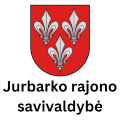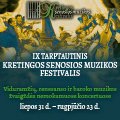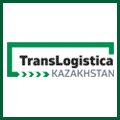Our port pro of the month is Mr. Gunnar Tryggvason, in the Port Direction of the Associated Icelandic Ports (Faxaports) since 2019. In this interview, Mr. Tryggvason discusses the growing importance of Icelandic Ports since the energy crisis, their role in the cruise sector, digitalisation and many other interesting topics!
Can you briefly tell us about the Associated Icelandic Ports? Which ports are you managing? What are its main activities, opportunities, and challenges?
Firstly, let's use the English nick name “Faxaports” which we find more in line with our name in the local Icelandic language (Faxaflóahafnir).
Faxaports operate four ports in and around the capital Reykjavik. All ports are within the bay called Faxaflói - hence the name. The oldest port is in the centre of Reykjavik and has developed into a tourism hub along with fisheries. Our largest share of revenue however is originated in Sundahöfn which is Iceland’s main cargo hub and berthing place for larger cruise ships. The port of Grundartangi is servicing an industrial park where large electricity intensive industries such as aluminium and silicon metal smelters are located. Akranes is a fishing town whose port is focusing on service that industry.
Our main challenge today is mitigation of environmental impacts of the port operation, both related to air quality, greenhouse gas emission and last but not least noise pollution. The city is growing, and residential areas are getting closer to the port operation. We must find ways for both to live together.
What is your long-term vision for Icelandic Ports? What are the main investment projects for the coming years? Could you briefly describe the importance of these investment projects for the port and the region?
We see ourselves as a port company with strategic location in the middle of the north Atlantic Ocean, servicing cargo shipments from and to Europe and North America. Our vision is to operate safe, green and efficient ports with sustainability as a guiding principle.
There is growth in our ports, especially in the cargo and cruise ship fields. However, investments projects in Faxaports are not intended solely to cater for one single industry. Therefore, we strive to plan our investments with multiple uses in mind.
The largest investment at the moment is the extension of the main quay in Akranes Port, where we are very proud of the fact that the steel used is 100% recycled. It is estimated that the new extended quay will be ready in 2024. The extension will improve the quality of the port for the fishing industry and will allow mid-size cruise ships to embark in Akranes port.
Onshore power supply (OPS) is an important step towards green ports. Last week, a 1,5 MW OPS for container ships was commissioned. During next spring, Faxaports will take into operation OPS for smaller ships in the Old Harbour in Reykjavik. OPS for larger cruise ships is planned for 2026-2030 in Sundahofn port.
Faxaports are answering the demand for turnarounds of cruise ships in Reykjavik by planning a new terminal in Sundahofn. The terminal which will be BREEAM certified is estimated to open in 2025 and is intended to be a multiuse terminal that can be rented out for meetings and conferences during off season. Turnarounds have been a welcoming addition to our growth since they benefit even better the economy of our surrounding community.
We are developing our industrial park at Grundartangi port further. International companies in the field of hydrogen and green fuel production are in talks withs us regarding new projects there.
The development of electric tug boats has been positive and which we follow closely. We are planning our next tug boat for the coming years to be electric and by such further reducing our CO2 impact.
New headquarters are planned during the next years and will be located under one roof in Sundahofn Port, by such centralising better operations in our two Reykjavik ports.
The cruise business is a core activity of the port of Reykjavik. How do you see this business evolving in the coming years? Has passenger traffic picked up again after the COVID-19 crisis?
We see growth in the cruise business in our ports. Partly because of the popularity of Iceland, but not least due to the turnaround and transit potential Reykjavik has, located in the North Atlantic in-between North America and Europe.
During 2022 we saw that the cruise industry was gaining former numbers as the summer progressed. For 2023 we are looking towards a considerable increase in both transit and turnaround calls – so it is fair to say that passenger traffic has picked up, but also changed since the ports in Reykjavik are now an important turnaround destination. We are expecting to have 280 cruise calls next season.
The fishing industry plays an important role in Faxaports. How is this business evolving? What are its main challenges?
Unfortunately, we have seen a decrease in landed catch in our ports during the latest years. There are several reasons for this, one of which is lack of cold storage capacity in our ports. Another has been the nationwide reduction of the fishing quota. Non-Icelandic fishing vessels fishing in the North Atlantic are often required to land their catch in their respective home countries, which makes it hard to increase our share in that segment.
We are currently working on site plan for cold storage in one of our ports in order to turn our luck around.
The EU, with its Green Deal ambitions and the recent REPowerEU plan, is striving to get independent from Russian fossil fuels as well as climate neutral by 2050. As energy hub, how do you anticipate the projected changing energy landscape in Europe? Within this changing energy landscape, what are the business opportunities for your ports? What will be the main challenge?
Europe must focus on two goals in this regard. One is to diversify the sourcing of energy. The other is of course decarbonization. As Iceland has a 100% renewable electricity, we see this of course as an opportunity. Historically Iceland has attracted various electricity intensive industries as the cost of electricity has been lower here than in other European countries. Two of these electricity intensive plants are located in our port at Grundartangi as mentioned earlier. There we could possibly see a green fuel, such as ammonia or methanol, production in the years to come.
The greening of a port requires the help of all port stakeholders. What can Faxaports do to encourage all stakeholders to make their operations more sustainable?
Faxaports can and have implemented steps towards a more sustainable harbour and maritime business, such as the implementation of the Environmental Port Index, OPS, funded development and implementation of OPS for cargo ships, allocation of land for sustainable businesses, requirements regarding greener construction of new quays, buildings and piers.
Furthermore, it is important for Faxaports to have a clear vision and strategy, by which we can lead by good example as the home port for many of Iceland’s leading companies in their field. Those same companies are also following their own green strategy, where operations and headquarters located in a green port is important.
European ports are increasingly investing in digital solutions to improve the efficiency of the logistics chain and port operations. Have Icelandic Ports taken any initiatives towards digitalisation?
In one respect Faxaports differ from many other ports in respect of stevedoring, which is done solely by the cargo transporters themselves. Therefore, we are limited to what we can do regarding the logistics chain, however we have installed in our tugboats, IoT sensors which log fuel consumption, speed over ground as well as precise AIS location. This data is fed to a Power BI dashboard where we can analyse each operation conducted by our tugboats, in retrospective.
Iceland is an EFTA member. What does this mean in terms of EU policy? Do you see it as a problem to be subject to most EU policies while your government is not directly sitting at the Brussels political table?
As an EFTA member, Iceland is affected by EU policies like other EFTA members such as Norway. Our relationship with the EU and a potential membership are a constant debate. Those who are in favour of membership point exactly to this issue i.e. that we could have earlier involvement in the policymaking of the Union.
You are an observer member of ESPO. In your opinion, what is the added value of being part of an organisation like ESPO?
Sharing knowledge is probably the most important part of ESPO membership. We are running a fairly large port operation quite far away from other ports of similar scale. Being able to get insight into other operations with similar challenges and learn the way to deal with it is very valuable for us.
How did you get into maritime transport? How did your career path lead to this position?
Good question! I am an electrical engineer by education with background in the field of finance. Energy and infrastructure have been my main focus for the last 15 years or so. I was senior manager and advisor at KPMG for quite some time before taking the position as assistant port director at Faxaports in 2019 and recently promoted to port director. I grew up in a fishing village in NW-Iceland, where the sea meant everything to the community. During my studies, I worked as a fisherman on many different type of boats, fishing cod, shrimps and other species. I guess my interest in ports and port infrastructure can be explained by this background.
Source, www.espo.be




.jpg)






